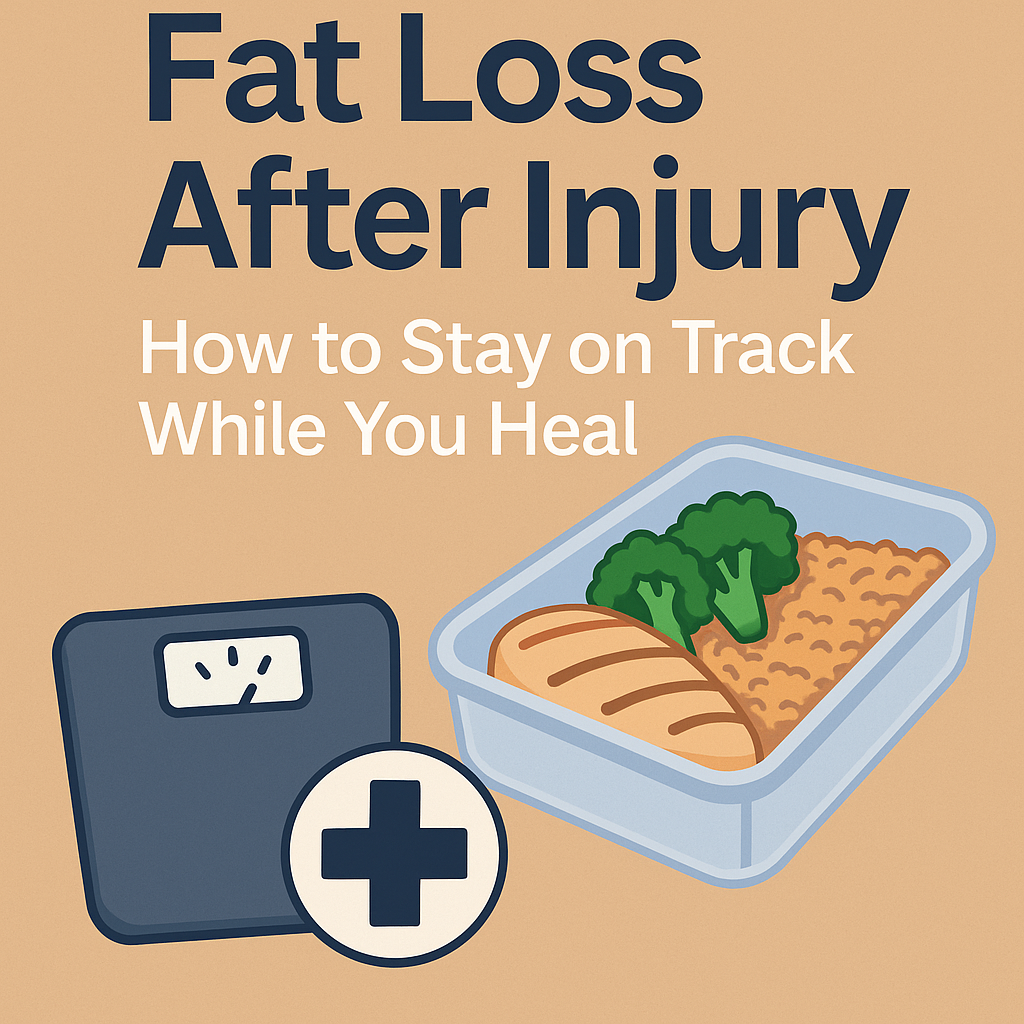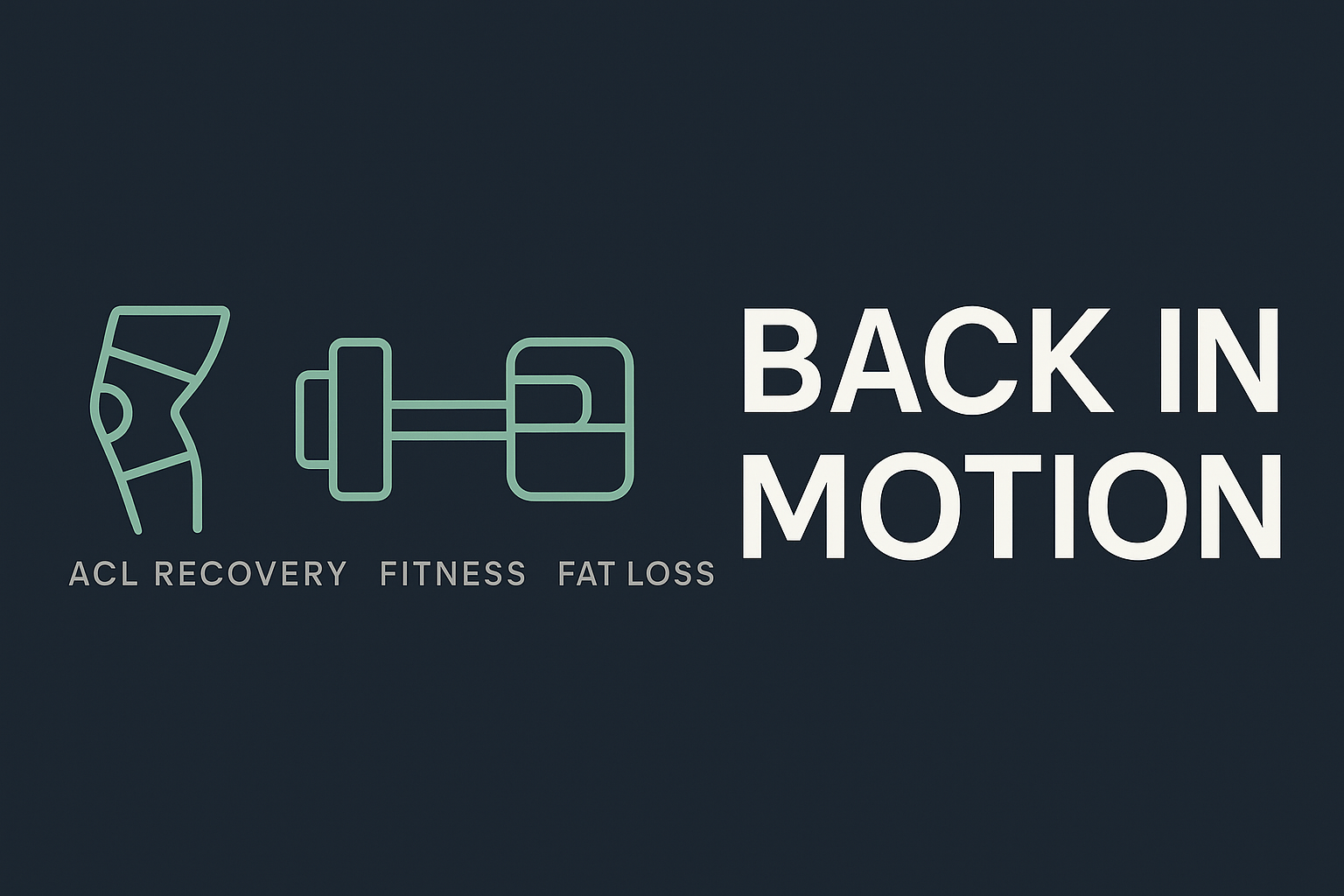Meta Description:
Discover how to lose fat effectively even while recovering from injury. Learn realistic strategies for nutrition, movement, and mindset that actually work.

Fat Loss While Injured: It Is Possible
When you’re dealing with an injury, especially something like an ACL tear, fat loss might feel impossible. You’re less active, more sedentary, and emotionally exhausted. But here’s the good news — fat loss doesn’t have to stop.
Let’s break down exactly how to stay on track even if you can’t move like you used to.
1. Reframe Your Mindset
Getting leaner isn’t just about exercise — it’s mostly about what you eat. When you’re injured, your body is already working overtime to repair itself. Your job is to give it what it needs (nutrients) and not overload it with what it doesn’t (excessive calories).
Fat loss is still possible. You just need to play smarter.
2. Set a Realistic Calorie Target
You don’t need to go ultra-low calorie. You just need a modest deficit. Start by using a TDEE calculator online and subtract about 15–20%.
Example:
If your maintenance is 2500 calories, aim for 2000–2100 daily.
Tools like MyFitnessPal, MacrosFirst, or our Fat Loss Meal Planner can help track this easily.
3. Focus on Protein & Fiber
Protein helps preserve muscle mass while fiber keeps you full. When combined, they control cravings and support your recovery.
High-Protein/Fiber Meal Examples:
- Greek yogurt + berries + chia seeds
- Grilled chicken + quinoa + roasted vegetables
- Protein smoothies with spinach & frozen banana
4. Move Where You Can
Even small movements help. Can’t squat? Do seated upper body. Can’t do cardio? Try walking laps around your living room. Movement supports blood flow, mood, and calorie burn.
Rehab exercises count too. Be consistent.
5. Meal Prep Is Your Weapon
Injury can make motivation tank. Having healthy meals prepped in advance reduces friction.
Batch cook:
- Lean meats (chicken, beef mince, tofu)
- Carbs (rice, potatoes, wraps)
- Veggies (roasted or raw)
Keep grab-and-go options like boiled eggs, protein bars, and cut fruit.
Header 2:
6. Track Progress Beyond the Scale
With injury, the scale may not move as quickly due to inflammation and stress. Track:
- Measurements
- Progress photos
- Energy & digestion
- Strength in rehab sessions
Final Thoughts
Fat loss during recovery isn’t about perfection — it’s about persistence. Focus on nutrition, adapt your training, and stay consistent.
You’ve already been through the hard part — the injury. Now let’s work on the comeback.
